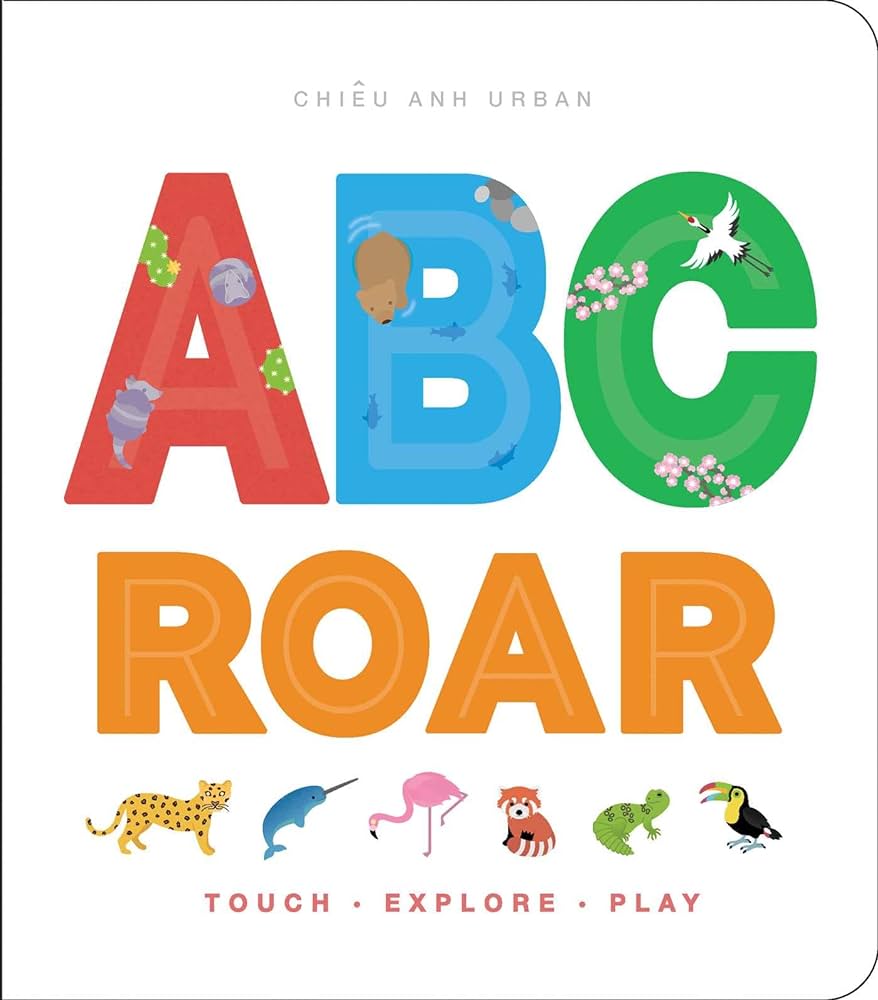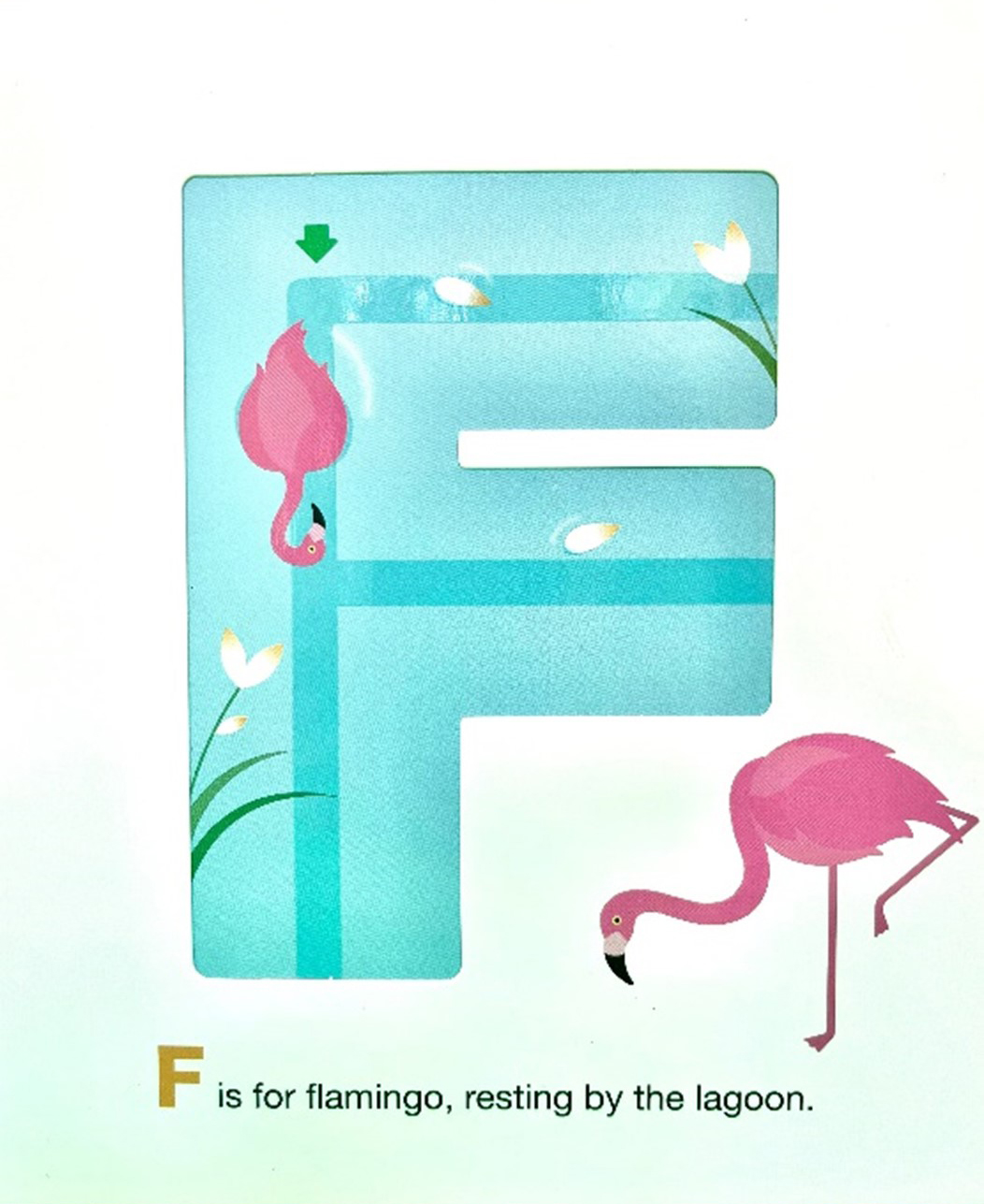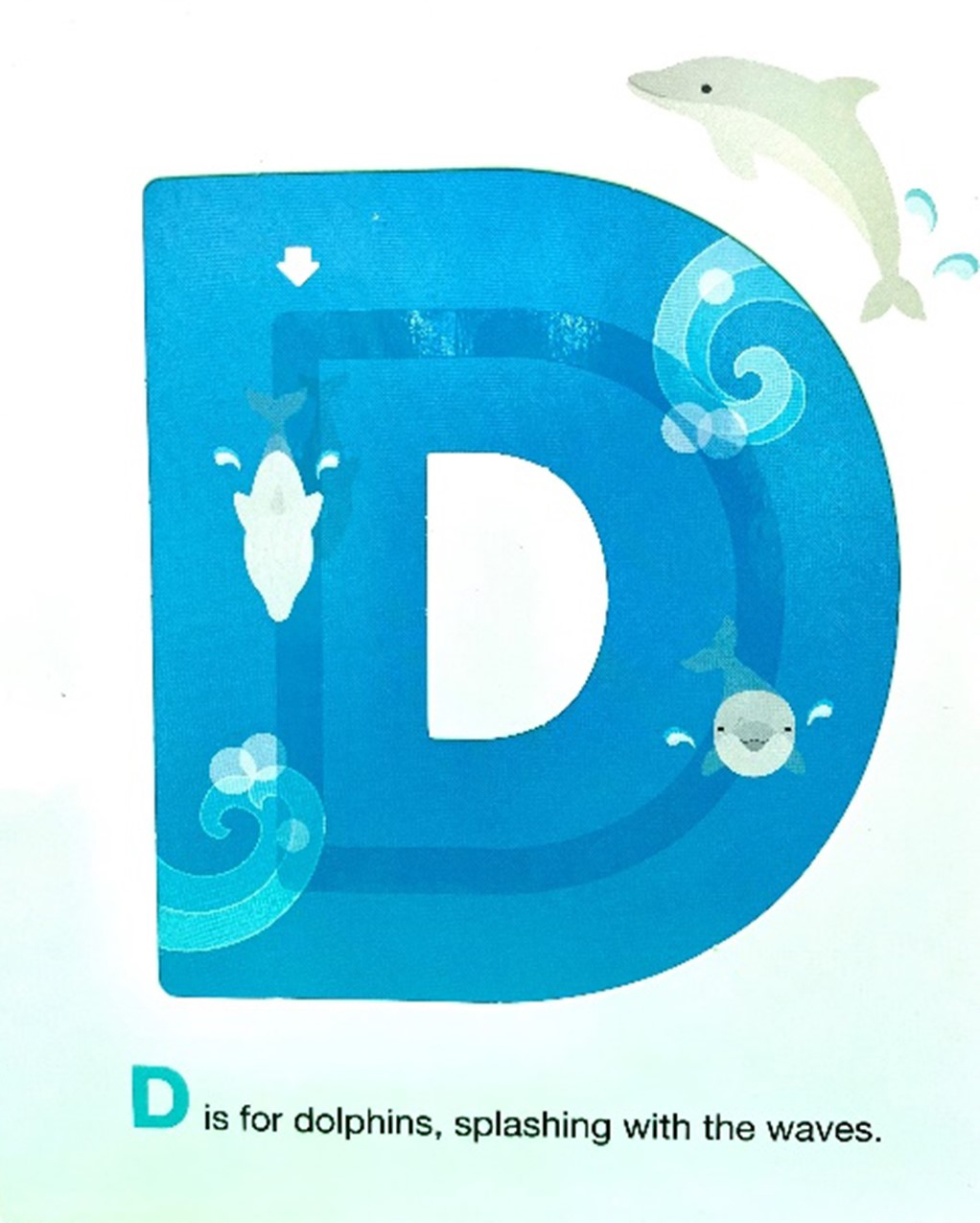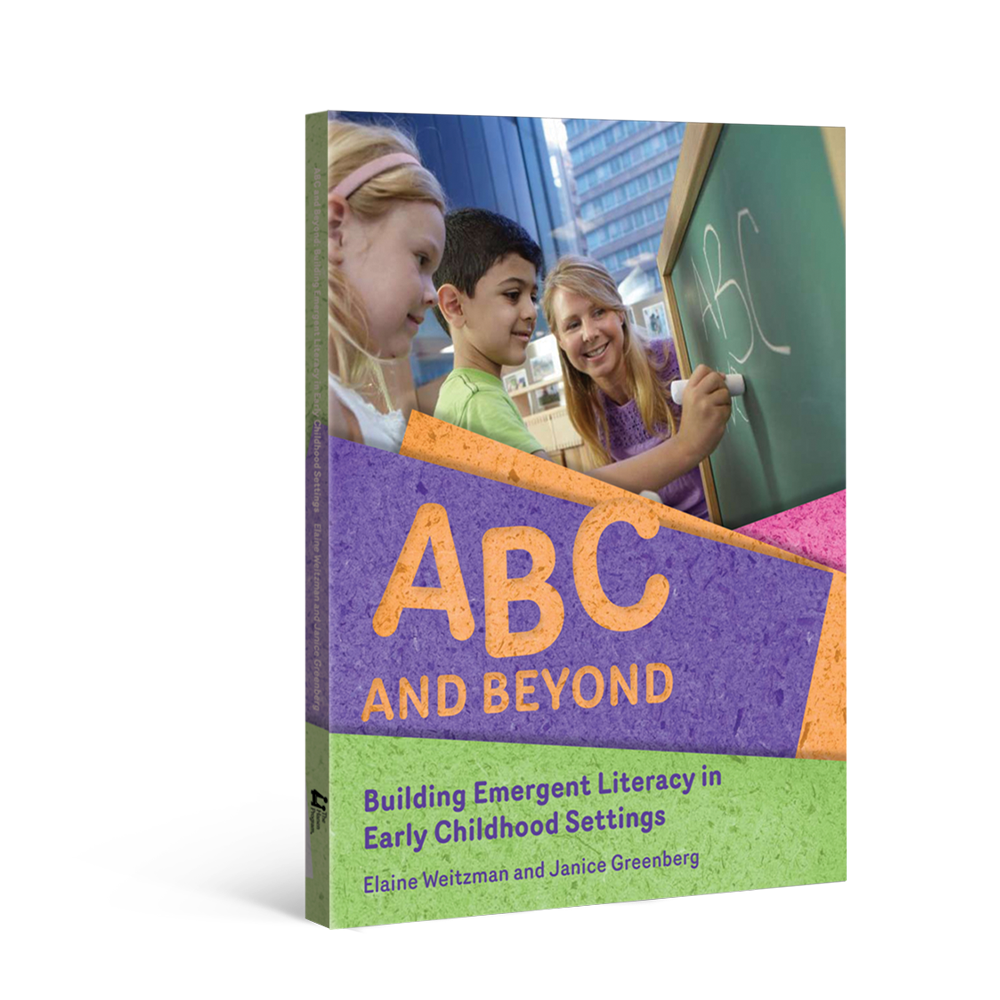This month's Book Nook topic is...
Building Letter-Sound Awareness with
an Alphabet Book

To prepare for learning to read and write, children need to learn that letters match individual sounds in speech. For example, children need to learn that the sound /m/ goes with the letter M. This is called letter-sound knowledge. Studies have shown that children with strong sound awareness tend to become better readers and writers.
Matching letters to sounds can be challenging. It can take preschool-aged children two to three years to accurately match all the letters and sounds. In English, there are 44 different sounds but only 26 letters in the alphabet, which means some letters represent several different sounds. For example, the letter C can make three different sounds: the sound /s/ as in “ceiling,” the sound /k/ as in “cake” and combined with the letter H, it makes the sound /ch/ as in “chin.”
Talking about letters and the sounds they make while you share books with young children helps them gradually develop their letter-sound awareness. The Four S’s – which stand for Show, Say, Sound and Stress – is a strategy you can use to help expose preschool children to letter-sound knowledge while you’re looking at print, both in books and at other times throughout the day.
The Book:
ABC Roar by Chieu Anh Urban
Why We Chose This Book
ABC Roar is an engaging alphabet book that offers many opportunities to talk about letters and sounds. While there are opportunities to talk about letters and sounds in other types of books, alphabet books work particularly well because:
- They don’t usually have a storyline, so you won’t interrupt the flow of the story to talk about letters and sounds.
- They often showcase a specific letter on each page and draw the reader’s attention to the letter, perhaps by bolding the text or using a different colour.
ABC Roar includes large colourful letters and animal pictures with a short sentence about the animal. The book offers a fun tactile experience because the large letters have cut-out layers that children can feel and trace as you talk about the letter’s name and the sound it makes. When the letter is named in a sentence, it’s done in a different colour than the rest of the text, making it easier to draw the child’s attention to the letter as you talk about it.
Using the Four S’s: Show, Say, Sound and Stress
Here’s how to use the Four S’s with ABC Roar:

- Show the letter – Point to the letter to help the child learn what it looks like. Focus on the first letter of a word because these letters are more obvious and they’re the ones highlighted in alphabet books. If you’re reading ABC Roar, you could point to the letter F in the word “flamingo.”
- Say the letter’s name – Tell the child what the letter is called to help them learn its name. You could say, “This is the letter F. F is the first letter in ‘flamingo’.”
- Sound out what the letter says – Make the letter’s sound to help the child understand the difference between the name of the letter and the sound it represents. In this example, you might say, “F makes the sound ‘ffff’ in ‘flamingo’.”
- Stress the sound – Exaggerate the sound by saying it a little louder or longer or by repeating it. You could say, “Listen to the sound the letter F makes – ffflamingo.”
After you use the Four S’s with a specific letter, you can find another word that starts with the same letter and makes the same sound. We recommend you start using the Four S’s with letters that consistently make the same sound. For example, the letter M almost always makes the sound /m/. Beginning with letters that make a consistent sound makes it easier for children to make the letter-sound connection.
Tricky Letters
Some letters are more challenging to match to their speech sounds because these letters can make different sounds in different words. The letters A, C, E, G, I, K, O, P, S, T, U and X all have multiple sounds associated with them. For example, the letter S often makes the sound /s/ as in “soup,” but when it is combined with the letter H, it makes the sound /sh/ as in “shoe.”
If you come across one of these difficult letters, talk to the child about it. You could say, “Sometimes the letter S makes a different sound, depending on the word.” Pointing out these tricky letters will help increase children’s awareness of letters and sounds. It will take time for them to learn all of these exceptions.
Building Letter-Sound Awareness Gradually
Remember, it can take preschool children two to three years to accurately match all the letters and sounds. Using the Four S’s helps expose children to letter-sound knowledge in a fun way so they can gradually develop this skill. As children hear you talk about matching letters and sounds, they’ll gradually learn to:

- name letters of the alphabet
- make the sound that goes with a letter
- think of other words that start with the same letter or sound
- begin writing words on their own
If the child seems interested, and you’ve exposed them to this strategy many times, you can encourage the child to think of another word that starts with the same sound and letter. In ABC Roar, you might point to the letter D in the word “dolphins” and say, “This is a D. D is the first letter in ‘dolphins’. D makes the sound /d/ in ‘dolphins’. Listen…d-d-dolphins. Can you think of another word that starts with the letter D and makes the sound /d/?” At first, the child may need your help thinking of another word. With practice, they will be able to think of words on their own.
Once the child takes their turn by saying or doing something, respond to what they said with interest and enthusiasm. Then, wait again to give the child the chance to respond. Try to keep the conversation going for several turns. It’s very likely the child will want to continue the conversation when it’s based on their interests.
Using the Four S’s Throughout the Day
We’ve been talking about using the Four S’s in books, but you can also use this strategy throughout the day. Print is all around us and you can use the Four S’s and help the child gain letter-sound knowledge when you talk about print in their environment. For example, you could talk about the letters and sounds in the printed words:
- on your grocery list or calendar
- on the signs you see outside
- on the child’s clothing
- when the child writes something down
The more often you can use the Four S’s, the greater the child’s letter-sound knowledge will be.
Happy reading!
More Resources
The strategies in this Book Nook post are drawn from Hanen’s practical, research-based guidebooks for building emergent literacy. Explore the links below to learn more about how these guidebooks can support you.
For Parents I'm Ready! guidebook
I'm Ready! guidebook
For Educators ABC and Beyond guidebook
ABC and Beyond guidebook
